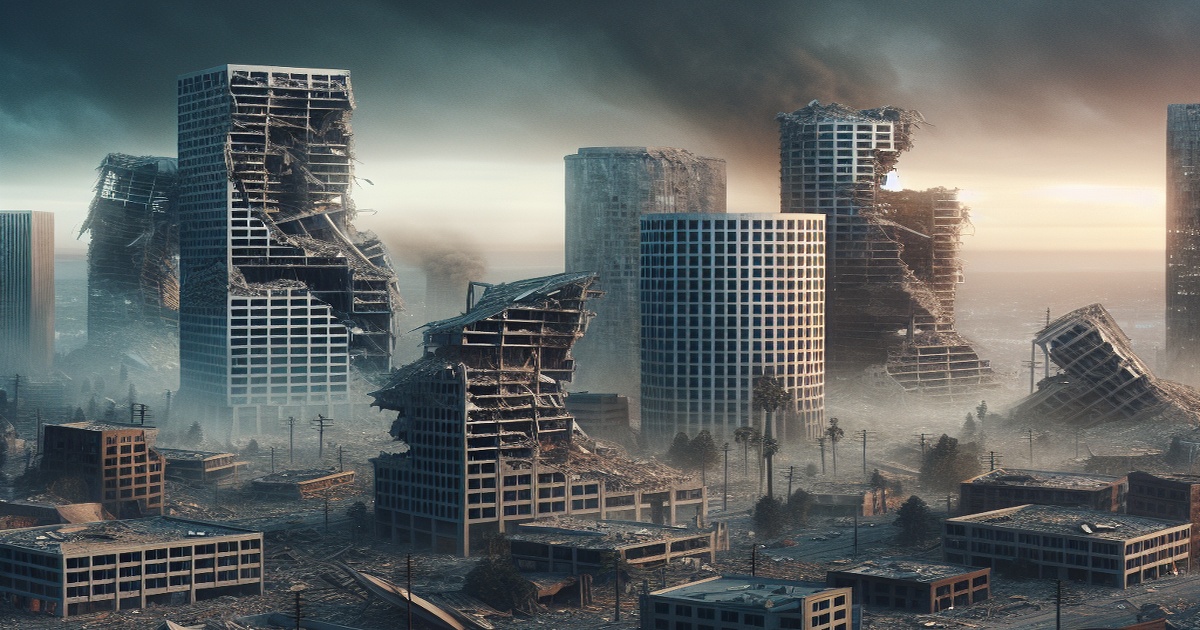A Devastating Toll on Urban Areas
The Eaton and Palisades fires, which erupted in Los Angeles last week, have torched more urban area than any other fire in the state since at least the mid-1980s. This is according to an Associated Press analysis of data from the Silvis Lab at the University of Wisconsin in Madison.
The fires have collectively burned almost 4 square miles of highly dense parts of Los Angeles, more than double the urban acreage consumed by the region's Woolsey Fire in 2018. This makes them the largest urban fires in California history.
Experts attribute this increase in urban wildfires to several factors. Urban areas continue to sprawl into wildland, increasing the interface between developed and natural areas. Additionally, climate change is raising global temperatures, leading to more severe weather, including droughts, especially in the western United States. These dry conditions create more flammable vegetation, making wildfires more likely.
The Eaton and Palisades fires have had a devastating impact on Los Angeles. They have killed at least 27 people, destroyed more than 12,000 structures, and put more than 80,000 under evacuation orders. The fires are likely to be among the most destructive in California history.
The fires' timing and path through the city are unprecedented in history. They began close to populated areas and were whipped by fierce Santa Ana winds, overwhelming fire crews. This highlights the increasing vulnerability of urban areas to wildfires.
While fires that begin close to populated areas are often caused by people, their proximity to people also means they are usually extinguished sooner. However, this was not the case with the Eaton and Palisades fires.
The 2017 Tubbs Fire in northern California's wine country provides another example of a devastating urban wildfire. Sparked by a residential electrical system, the fire tore through suburban areas of Santa Rosa, killing 22 people and destroying more than 5,600 homes, businesses, and other structures.
These recent fires underscore the need for increased preparedness and mitigation efforts to protect urban areas from wildfires. This includes creating defensible space around homes, hardening structures to resist fire, and improving early warning systems.







10 Comments
Loubianka
Thank you for highlighting the urgency of this issue. It’s time to take urban fires seriously and begin implementing those mitigation strategies.
Katchuka
Urban areas need to adapt to higher wildfire risks; it's a battle against nature, and we must change our approach.
Loubianka
Is anyone surprised that urban areas are burning? Look at the decision-makers who continually allow homes to be built in harm's way.
KittyKat
We can't ignore the human factors involved in these fires. More education on fire safety could really help prevent future tragedies.
Noir Black
Promises of preparedness mean nothing if nothing changes on the ground. Accountability is key!
Michelangelo
People need to stop building in fire-prone areas! We're asking for disaster with every new urban development in these regions.
Leonardo
This isn't just a natural disaster; it’s a man-made one. If we don’t change our development policies, we’ll keep facing this.
Raphael
The fires have been awful, but I hope this prompts a deeper conversation about climate change and how we can protect our cities.
Donatello
Let's not just mourn the losses but take this moment to advocate for transformational changes in our cities’ infrastructure.
Loubianka
I appreciate this analysis; it sheds light on our vulnerabilities and reinforces the need for better urban planning.